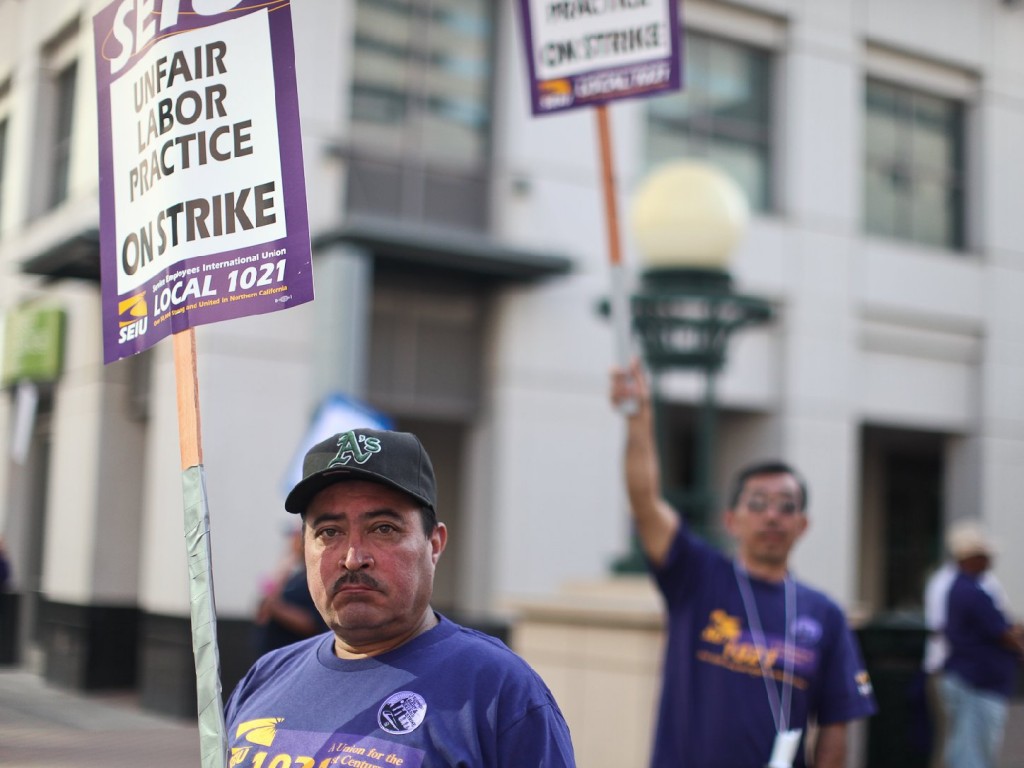Cabanatuan: It’s really difficult to tell how far apart they are because when they return to the bargaining table they signed a 30-day contract extension and a mediation agreement, and both sides agreed they would not discuss the details of what’s being talked about in negotiations outside of the negotiating room. Martin: Just yesterday BART unveiled mockups of brand new rail cars, which the public can view all week at the MacArthur Station. Management says those cars won’t be possible if they capitulate to all the worker’s demands. It sounds like a big part of management strategy is public relations.
Cabanatuan: I think certainly some of it has to do with public relations; it is a public system after all. I think they want the riders to know that ‘this is where our money is going.’ It’s a publicity campaign on both sides, I think.
Martin: And what about the BART workers’ side?
Cabanatuan: The workers are saying, ‘look, we made sacrifices last time around.’ They’ve gone without raises for five years and they say that now that the system is back on its feet and doing better than ever in many terms, including ridership, they should share in the wealth and the success that they helped produce.
Martin: Now, many riders are going to be upset if BART workers go on strike again. What do the workers have to say to that? What do they stand to gain if they did that again?
Cabanatuan: I think what it is is leverage. They have the ability to shut down the transit system. That is a very powerful thing. They say they don’t want to do it. The thing to remember is they don’t get paid when they’re on strike, so I’m sure there are many of them who don’t want to do it. I think there are others who see the potential long-term benefit of it, but the longer a strike goes on, the harder it is on the people who are on strike, as well as the commuters.
Martin: Last time around public officials like Oakland Mayor Jean Quan and San Francisco Mayor Ed Lee stayed largely on the sidelines. Governor Brown didn’t play a very prominent role either. Any sense there’s political momentum building to end this?
Cabanatuan: I think there is political pressure out there. I think a lot of people are sort of taking a wait and see approach, hoping that the negotiations that are going on are successful. I think the governor has been more involved than people think. A lot of people think that he sort of punted and said, ‘You know, I’m not going to order a cooling off period.’ But the governor basically had the Labor Department get involved and that’s what spurred the contract expansion and the current negations. They brought in two new mediators and struck an agreement on how they were going to bargain, and the schedule for bargaining.
Martin: And what about that schedule? Is Aug. 4 still the critical date?
Cabanatuan: Since they haven’t been talking publicly about what’s going on at the table they could theoretically come out and announce that they’ve reached a tentative settlement any day, but the indication I’m getting is that they’re not there yet.
